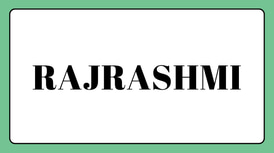Understanding Model Risk Management: Framework, Cost Analysis, and Reporting
Model Risk Management Report helps you to understand the financial and non-financial risks you have taken for your business/project. This report will give you ideas of cost control measures to be taken on different cost items and give you a road to plan further.
FINANCE BLOGS
CA Rajkumar Patel
6/9/20243 min read


Introduction to Model Risk Management
The model risk is the risk of loss resulting from using inaccurate or poorly devised models to make decisions. Models are used throughout financial services firms and are being used by other companies, as well. Valuing exposures, assigning consumer credit scores, predicting transaction fraud, and detecting suspicious, criminal, or terroristic activity are just some of their varied uses.
Model Risk Management (MRM) is a critical component in the financial and industrial sectors, ensuring the reliability and accuracy of predictive models. This practice involves the identification, assessment, and mitigation of risks associated with the use of models. By implementing robust MRM frameworks, organizations can make informed decisions, reduce financial risks, and comply with regulatory requirements.
There are costs and risks involved in using models, however, ranging from the direct costs of developing and implementing them to the adverse impacts of making decisions based on flawed or misused models. So it’s essential to adopt model risk management (MRM) to control the risks created by unmanaged models.
Framework of Model Risk Management
The framework for Model Risk Management typically includes several key elements:
Model development,
Validation,
Implementation, and
Monitoring.
Each stage is crucial for maintaining the integrity and reliability of the models. The development phase focuses on designing and building the model, while validation involves rigorous testing to ensure accuracy. Implementation ensures the model is integrated into the business processes, and monitoring is essential for ongoing performance assessment and adjustments.
The model life cycle includes the following steps: requirements analysis, development, implementation, testing, use, validation, maintenance, and changes.”
Cost Analysis Through MRM
Cost analysis is a significant aspect of Model Risk Management. Implementing an effective MRM framework can be resource-intensive, involving costs related to personnel, technology, and compliance. However, these costs are often offset by the benefits of reduced errors, improved decision-making, and enhanced regulatory compliance. By conducting a thorough cost-benefit analysis, organizations can determine the most efficient allocation of resources for their MRM efforts.
MRM Study Points on Each Cost Item
a. Cost per Production Pcs
b. Cost per Production Weightage
c. Recovery of Particular Cost Items
d. Absoprion % Costs
Study Tips for Analysis
Cost Analysis helps us to find the periodic per unit cost of each cost line item, and helps you to understand at which rate average unit cost must be maintained. By this practice, you can assign cost control for the production process.
Some expenses are fixed and need to cover their cost by the increase in production. i.e. Factory Rent, Depreciation and Amortization, etc.
Other than production units, some expenses need to be analyzed by other related specific criteria. i.e. Electricity cost by Electricity units, Production Incentive by Hourly work done, etc.
Abnormal Expenses need not be considered while calculating and comparing per-unit costs as they are considered separately. These costs are not normally incurred at a given level of output in conditions in which normal levels of output occur. These costs are charged to the profit and loss account, they are not a part of the cost of production.
Analytical Decisions Made Through MRM
MRM plays a pivotal role in analytical decision-making processes. By providing a structured approach to model validation and monitoring, MRM enables organizations to make data-driven decisions with greater confidence. This includes decisions related to risk management, strategic planning, and operational improvements. The insights gained from MRM reports help in identifying trends, predicting outcomes, and optimizing business strategies.
Purpose and Importance of MRM Reporting
MRM reporting serves several critical purposes, including regulatory compliance, risk assessment, and strategic planning. Reports generated through MRM provide insights into the performance and reliability of models, helping organizations identify potential risks and take corrective actions. Moreover, these reports are essential for demonstrating compliance with regulatory standards, thereby avoiding legal and financial penalties.
Industrial Usage of MRM
Model Risk Management is widely used across various industries, including finance, insurance, and healthcare. In the financial sector, MRM helps in assessing credit risks, market risks, and operational risks. Insurance companies use MRM to evaluate underwriting models and claim prediction models. In healthcare, MRM is applied to patient care models and treatment efficacy models, ensuring the accuracy and reliability of predictive analytics.
Useful Tips for Using MRM Reports
To maximize the benefits of MRM reports, organizations should follow several best practices.
Firstly, ensure that reports are comprehensive and include all relevant data and analysis.
Secondly, regularly update and review reports to reflect the latest model performance and risk assessments.
Thirdly, involve cross-functional teams in the review process to gain diverse perspectives and insights. Finally, leverage technology and automation tools to streamline the reporting process and enhance accuracy.
In conclusion, Model Risk Management is an indispensable practice for organizations relying on predictive models. By understanding the framework, conducting cost analysis, and utilizing MRM reports effectively, businesses can enhance their decision-making processes, reduce risks, and achieve regulatory compliance.
Download Here the Complete MRM Report Format of the manufacturing industry
Join Our Telegram Channel
Welcome
carajkumarpatel@gmail.com
